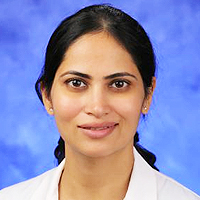Aortic dissection complicating carotid dissection and myocardial infarction
Published on: 18th March, 2021
OCLC Number/Unique Identifier: 8982641722
A 58-year-old hypertensive man presented to our insti-tution with acute chest pain and dizziness. Electrocardiogram revealed inferior wall myocardial infarction with suspected right ventricular involvement (Figure 1A). Computed tomographic aortography (CTA) depicted ascending aortic dissection (AAD) with involvement of bilateral carotid, subclavian, and right common iliac arteries (Figure 1B). Replacements of aortic valve and ascending aorta with CABG (Ao-RSVG1-LAD and Ao-RSVG2-RCA) were conducted.
Ketamine-related uropathy and cholangiopathy
Published on: 18th March, 2021
OCLC Number/Unique Identifier: 8982641312
23-year-old man had a 2-year history of ketamine abuse and presented intermittent abdominal pain, urinary urgency and dysuria for one year. Two weeks ago, laboratory analysis showed within normal limits. This time, he visited our emergency department due to hematuria and bilateral flank pain. CT scan and MRI revealed bilateral hydronephrosis, hydroureter, irregular thickened wall of urinary bladder, and fusiform common bile duct with distal stenosis
Millian´s ear sign: Bilateral ear erythema
Published on: 9th March, 2021
OCLC Number/Unique Identifier: 8982640801
A 79 years old woman presented with one-day history of pain, redness, pain and swelling without discharge in her left ear, later her right ear started with the same symptoms as in her contralateral ear spreading around the scalp and the forehead (Figure 1), she denied fever, or other constitutional symptoms.
Transcatheter Arterial Embolization for the treatment of upper gastrointestinal bleeding
Published on: 7th June, 2019
OCLC Number/Unique Identifier: 8165598100
Background: Transcatheter arterial embolization can be used for patients with recurrent bleeding from the upper gastrointestinal tract after failed endoscopic treatment. Our aim to identify the clinical and technical factors that influenced the outcome of transcatheter embolization for therapy of upper gastrointestinal bleeding after failed surgery or after failed endoscopic treatment in high risk surgical patients.
Methods: We performed a prospective study to analysis of the 15 patients who underwent Transcatheter arterial embolization for nonvariceal upper gastrointestinal bleeding at Alshifa hospital from January 2015 to March 2019.
The following variables were recorded: demographic data, time from bleeding start to TAE, units of packed red cells before TAE and units of packed plasma before Transcatheter arterial embolization and we analysis 30 days rebleeding rates and mortality.
Results: Patients treated with Transcatheter arterial embolization (median age: 62 years, range: 14–79 years).The technical success rate of the embolization procedure was 100%. Time from bleeding start to TAE was 2.1 (1-4) days , units of packed red cells before Transcatheter arterial embolization was 12.8 (4-22) packed and units of packed plasma was 3.2 (2-5) packed. Following 30 days after embolization, 2 (13%) patients had repeated bleeding and 3 (20.0%) patients died.
Conclusion: In our experience, arterial embolization is a safe and effective treatment method for upper gastrointestinal bleeding and a possible alternative to surgery for high-risk patients.
Syphilitic pemphigus
Published on: 22nd October, 2020
OCLC Number/Unique Identifier: 8691703922
A 34-week premature newborn, child of a mother without prenatal controls, a marijuana user, with gestational syphilis with a positive rapid plasma reagin test (RPR) titer 1:16, did not receive treatment during pregnancy. The newborn presented congenital syphilis, RPR titer 1: 256 positive test.
Opera-glass hand with arthritis mutilans in psoriatic arthritis
Published on: 28th May, 2020
OCLC Number/Unique Identifier: 8605993421
A 42 years old gentleman who was a known case of Psoriasis vulgaris since last 5 years presented to the Rheumatology clinic with inflammatory arthritis predominantly involving the joints of the upper extremities. Musculoskeletal examination of both hands revealed dactylitis and distal interphalangeal joint arthritis. He had a shortened right ring finger with excessive transverse skin folding suggestive of an Opera-Glass hand
An unusual case of a maxillary sinonasal neuroendocrine carcinoma
Published on: 18th February, 2020
OCLC Number/Unique Identifier: 8550965615
It’s a 24 years old female patient who presented with rhinological burning pain evolving since 1 year. She didn’t consult until a blistering lesion filled half of the oral cavity. The initial biopsy of the tumor was interpreted as a round cell tumor process.
An uncommon cause of isolated ascites: Pseudomyxoma peritonei
Published on: 26th April, 2019
OCLC Number/Unique Identifier: 8163913595
Pseudomyxoma peritonei (PMP) or Gelatinous Peritoneal Disease is a rare condition that refers to an anatomo-clinical entity characterized by ascites of variable abundance in the peritoneal cavity, viscous or mucinous, associated or not with neoplastic epithelial cells. It predominates in women. Diagnosis is guided by imaging and confirmed by histology. Prognosis is good in case of early management. We report the case of a male diagnosed with Pseudomyxoma peritonei revealed by isolated ascites.
Hepatic adenomatosis: A clinically challenging rare liver disease
Published on: 11th July, 2018
OCLC Number/Unique Identifier: 7828397085
43-year-old lady presented with incidentally discovered liver lesions while she was being managed for her complaints of menorrhagia. CT and MRI showed hepatomegaly with multiple lesions in both lobes of the liver with vascular element in the background of diffuse fatty infiltration. Patient underwent laparoscopic core biopsy. Histopathology showed extensive steatosis, intracytoplasmic giant mitochondria and absence of portal tracts, features highly suggestive of hepatic adenomatosis. IHC staining showed membranous and cytoplasmic positivity in hepatocytes for B-catenin consistent with multiple hepatic adenomatosis. Hepatic adenomatosis is a new clinical entity in the hepatological practice characterized by the presence of 10 or more nodules in the liver known for its major complication of bleeding. Hepatic adenomatosis is managed by regular imaging and resection of large (> 5cm) superficial and painful adenomas along with liver function tests and tumor markers to rule out malignant transformation. However, the potential cure being the liver transplantation.
A rare case of abdominal pain and hematuria from retroaortic left renal vein
Published on: 7th December, 2019
OCLC Number/Unique Identifier: 9272398140
62-year-old female with a history of arterial hypertension, attended the emergency department due to pain in the left flank. On physical examination no showed signs of peritoneal irritation. Urinalysis was indicated, that reported microscopic hematuria and negative abdominal ultrasound.




